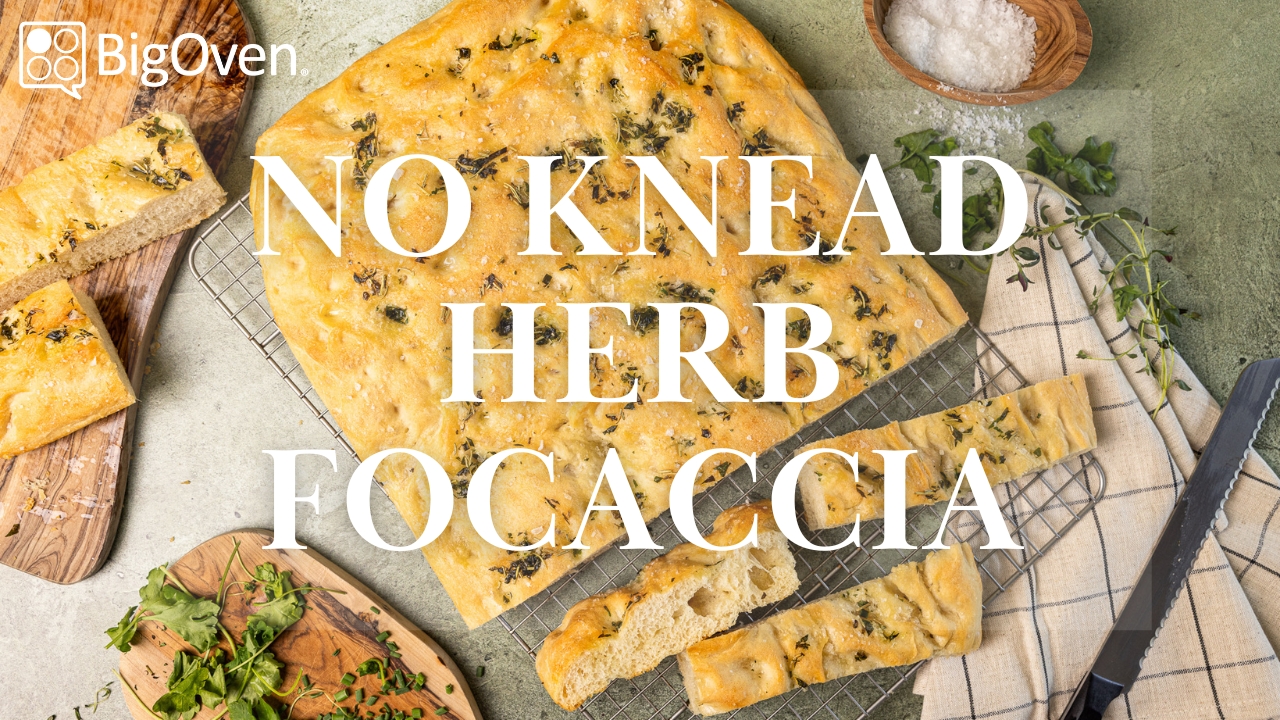How to Make the Best Mouthwatering, Golden-Brown No-Knead Focaccia Bread
Take the fear out of making homemade focaccia bread with this impossibly easy recipe!
Whether you want to hone your focaccia bread-making skills or simply craft an uber-delicious golden-brown bread that your dinner guests will request whenever they stop by, you'll love adding this focaccia bread recipe to your repertoire. It's simple, with ingredients that are likely already in your kitchen. Bonus – you don't need to knead the dough!
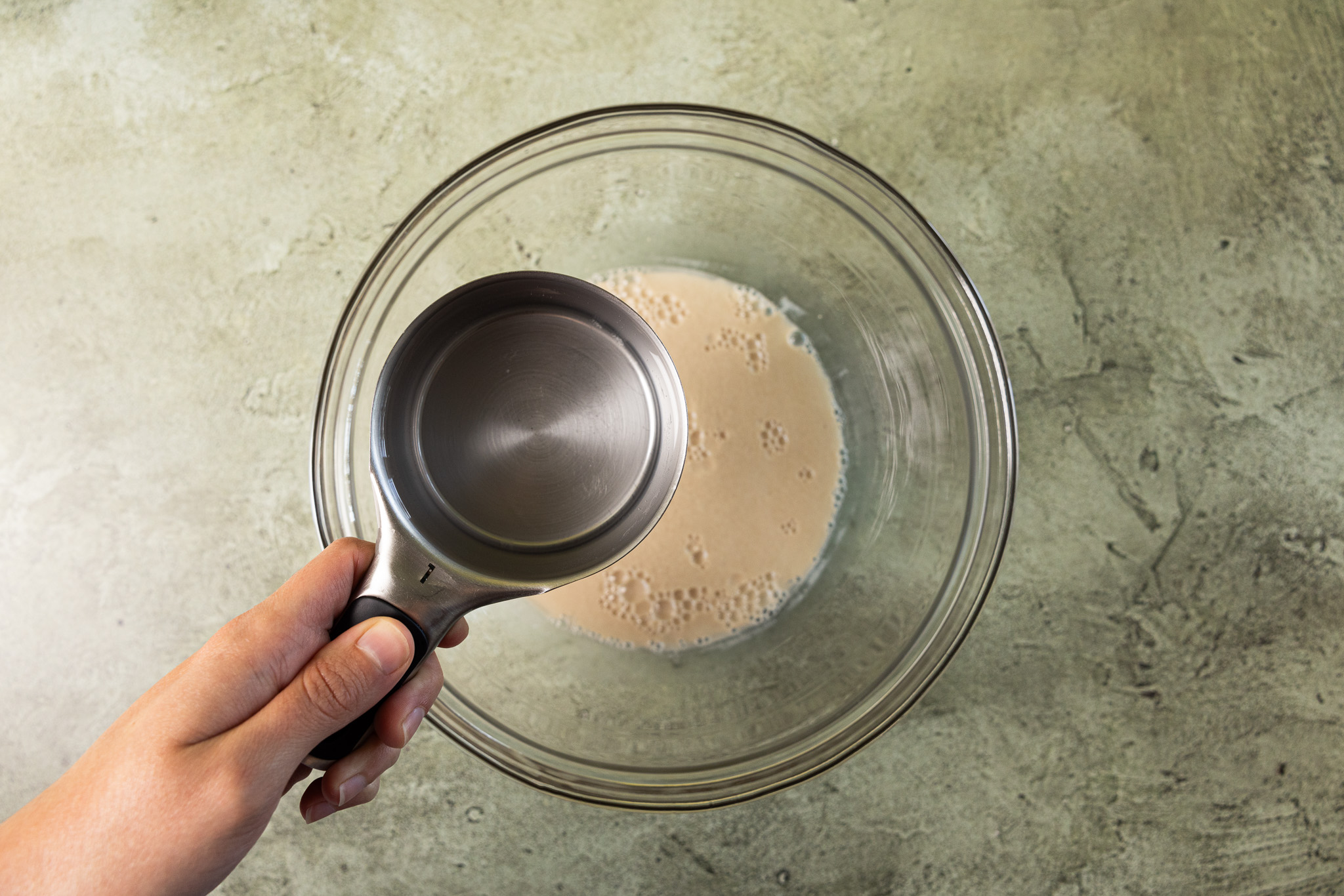
Bloom the Active Dry Yeast
This focaccia recipe is great because it is beginner-friendly, so even if you've never made bread at home before, you can still create delicious focaccia. To start, you'll need lukewarm water (check the temperature to see that it's around 105°F). This warm water helps bloom the yeast, ensuring your bread rises properly. Add it to a stand mixer bowl and whisk in the yeast and sugar. Then, allow the yeast to proof.
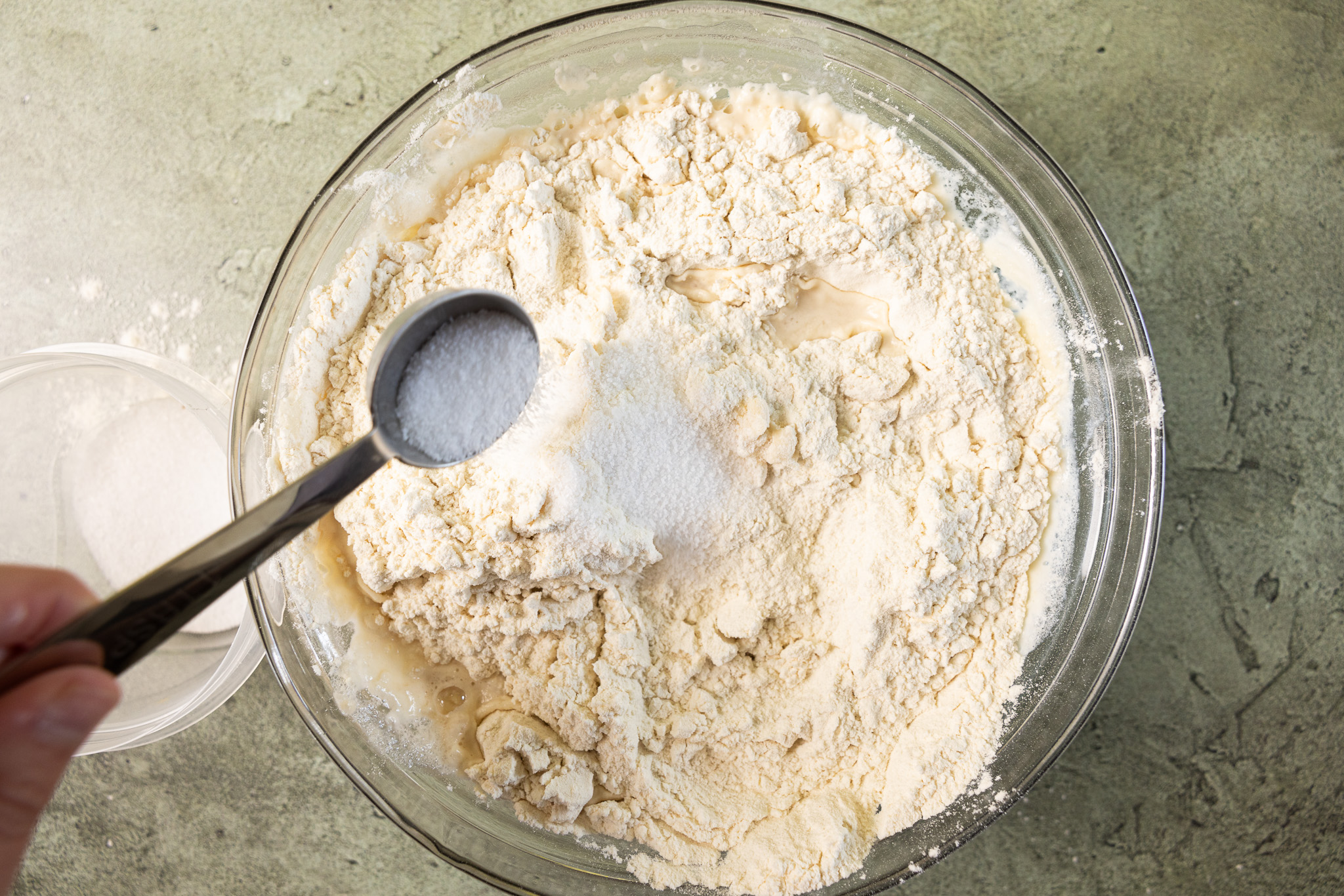
Get into the Dough
Once the yeast has bloomed, you can start creating the dough. Add the bread flour, extra water, and sea salt (or kosher salt). Then, let the stand mixer go to work! It should start as a looser dough once the ingredients are combined. Switch the mixer to a medium-high setting and continue mixing until the dough becomes smooth.
While your dough is resting, cover it with a damp towel to help trap the moisture (no dry dough here!). Then, you'll want to remove the towel and continue mixing for another 10-15 minutes. At this point, the dough should be pulling away from the bowl. Expect a sticky dough.
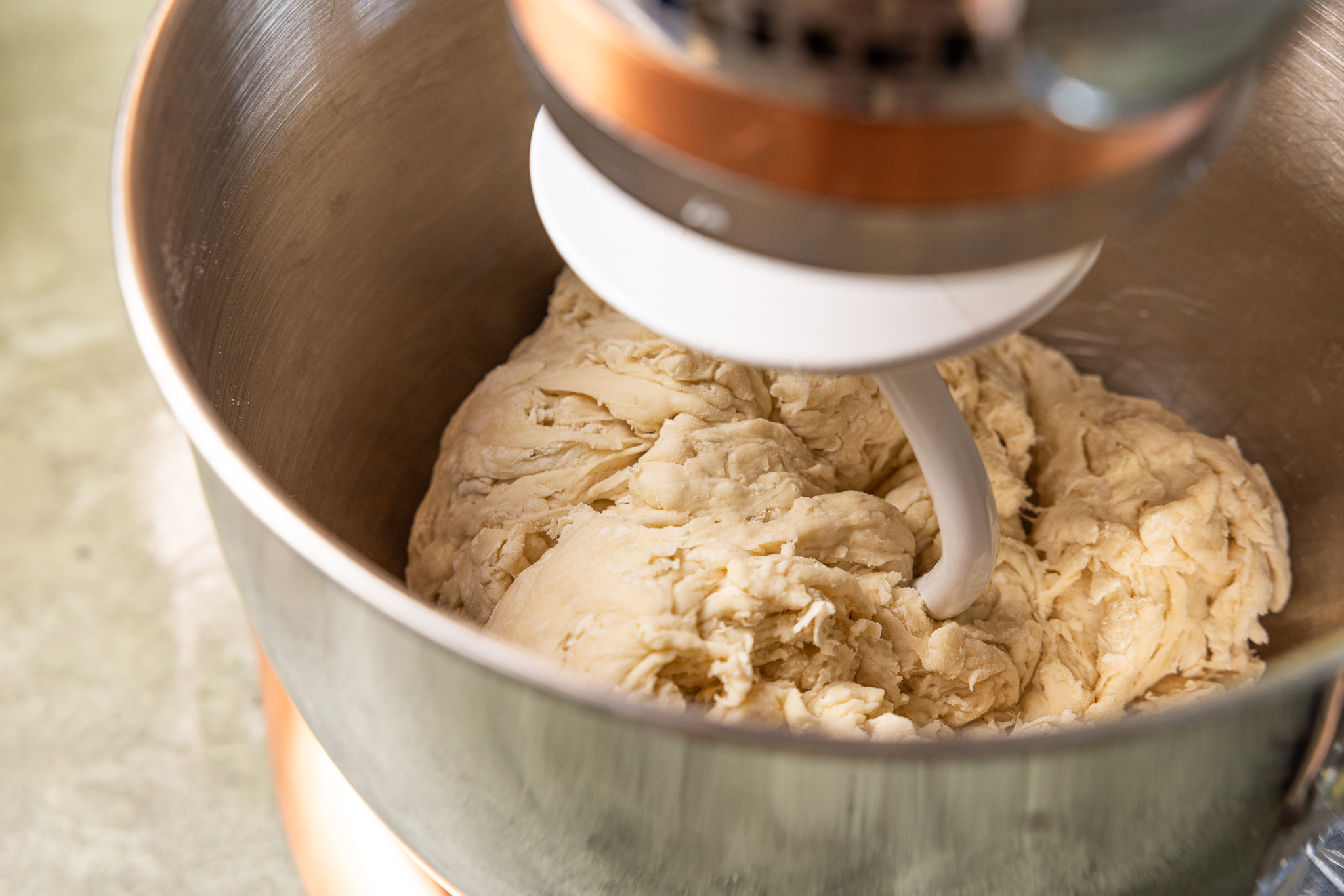
Patience is Key
The longest part of any bread recipe is waiting for the dough to rise. In this case, you'll need to let the dough rise three times before you bake it. As the dough rises, the yeast creates gas bubbles inside the bread. These bubbles help provide structure and flavor to the focaccia.
If you don’t allow the bread to rise, it will be dense and cake-like. Plus, it will lack flavor.
It’s important to drizzle the dough with olive oil and cover it with a towel before leaving the dough to rise. Adding oil to the dough helps keep the bread from getting tough once you cook it.
You'll want to incorporate stretching into the process the second time you let the dough rise. This extra stretching helps the dough rise even more. Before letting the dough rise again, pull it in all directions until it fits a baking sheet. Here's where the oiled plastic wrap comes into play – you'll use it to cover the dough before re-stretching it into a rectangle.
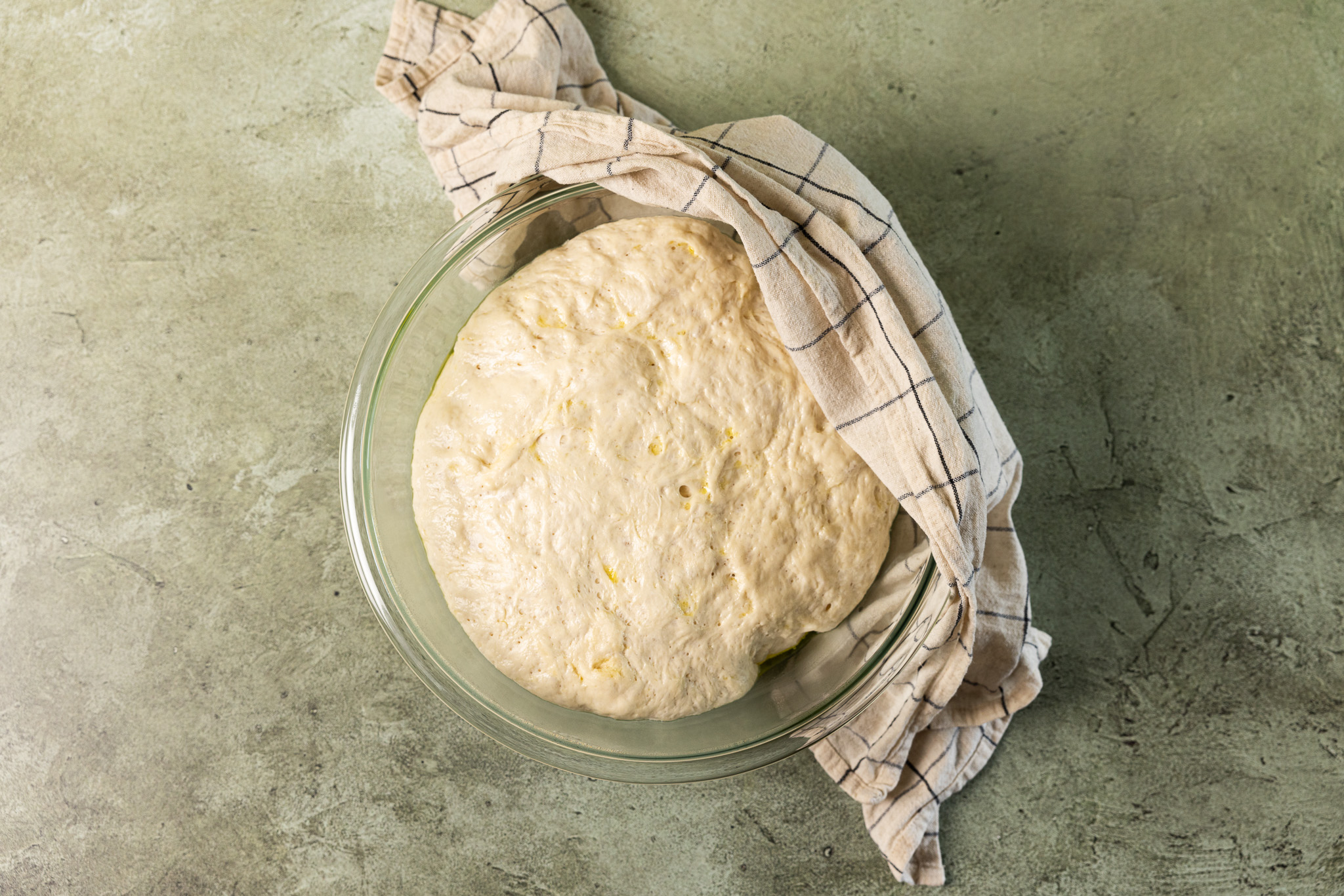
The Final Stretch
At this point, you can either allow the dough to rest for 1-2 days (more details below) or prep it for baking. Either way, the dough needs to be at room temperature for this part of the recipe. Allowing it to come to room temperature means the dough will double in height.
As it's proofing, you can preheat the oven, ensuring the racks are either at the top or bottom.
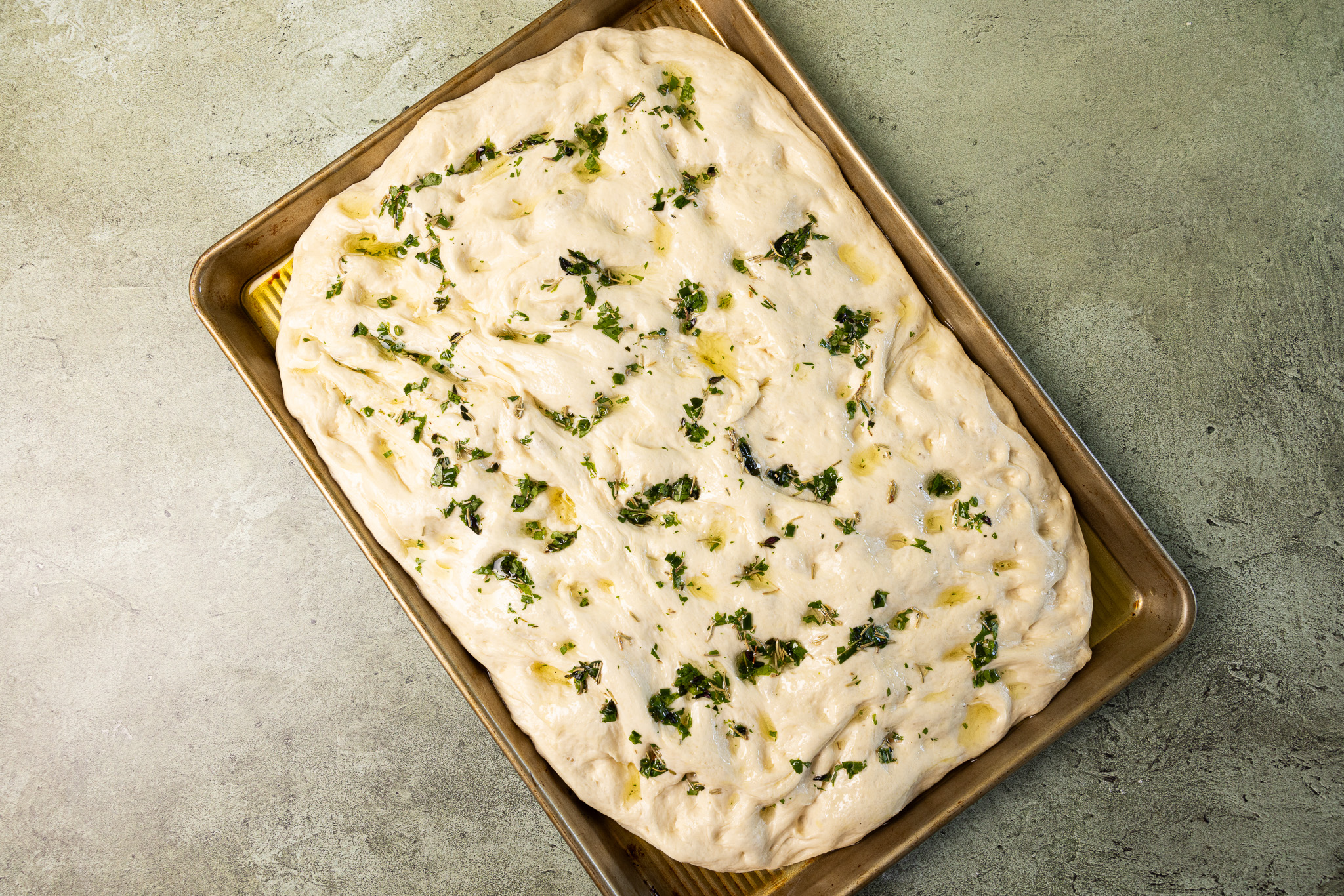
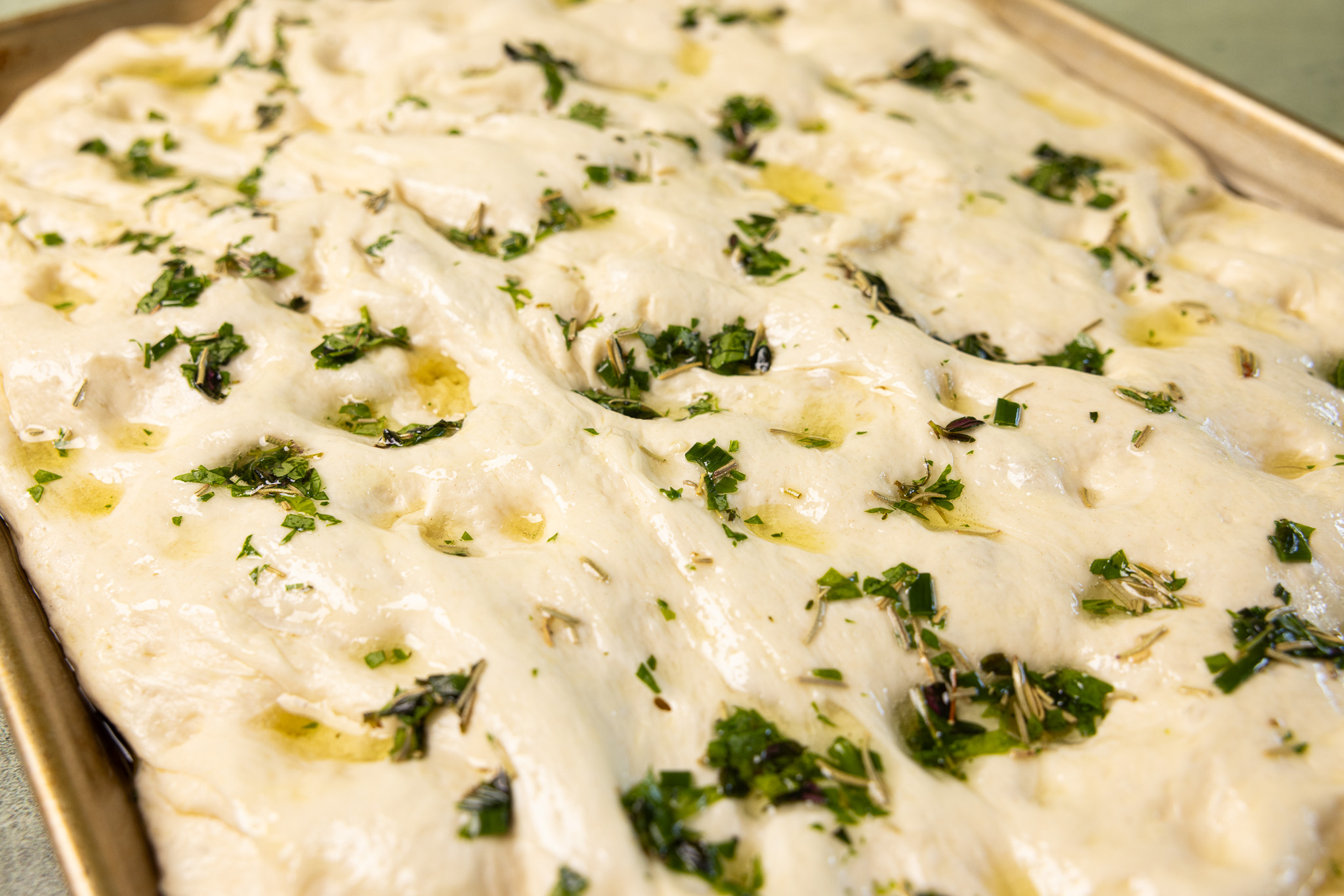 Dimpling the Dough
Dimpling the Dough
Here's the fun part – putting dimple marks in the dough. You'll need to have a good amount of oil on your hands for this step. Otherwise, the dough will stick to your fingers. Press the dough with your fingers spread apart to create "dimples." Repeat until the dimples cover the dough. These little dips hold the olive oil you'll be drizzling on in the next step; they also help your dough stay flat while baking. This step also ensures the outside of the bread is deliciously crispy.
Get Herby with it
We kept the herb topping simple, with crushed red pepper, extra virgin olive oil, fresh rosemary, thyme, and oregano. However, you can add any toppings or fresh herbs that you please. Some suggestions include flaky sea salt, sliced olives, cherry tomatoes, garlic cloves, and parmesan cheese.
Whichever herbs you choose, ensure you leave them off to the side, soaking in the oil. You're infusing the oil with the herb flavors by allowing them to sit in olive oil. This step also helps release the herb flavor, which is especially beneficial if you're using dried herbs. Bonus – it helps prevent your toppings from burning while in the oven.
After the dough is dimpled, drizzle with the herby olive oil and spread the toppings out to create a design. Here's where your creativity comes into play; you can arrange the toppings aesthetically or with a specific design (like turning the herbs and veg into flowers).
Cook the focaccia until it's golden brown, allow it to cool, and it's ready to eat!
As a note, you can prep the herbs and oil before proofing the yeast, while the yeast is proofing, or while the focaccia is rising. So, if you forget to do this at the beginning of the recipe, you're in luck; you'll have multiple opportunities to prep your toppings!

Tips & Tricks
When using the stand mixer, ensure you select the hook attachment. This attachment is specifically made to use for kneading dough. The hook shape helps the gluten in bread develop more quickly, cutting down the time needed to knead.
If you only have all-purpose flour, you can use that instead of bread flour. As a note, all-purpose flour will change the texture of the focaccia bread. Instead of being chewy, the bread will be lighter and softer.
You can craft the best focaccia bread by allowing it to rest for about two days. We note in our recipe 24 hours, but you can let it rest for up to 48. While the dough rests, the flavors will develop even more. This also allows the sugars in the dough to ferment, creating an even lighter dough (and one that’s easier to digest!).
What to Make with Homemade Focaccia Bread
Of course, you can enjoy this herby focaccia bread as-is or dipped in olive oil for a mouthwatering snack. To step up your focaccia recipe game, turn your homemade bread into a delicious sandwich, like this Pressed Focaccia Sandwich.
Get creative with your focaccia, turn it into a pizza crust, dip it in soup (like this Creamy Chicken Tortellini Soup), or use it to soak up every last bit of this Vodka Sauce. There’s quite a lot you can do with homemade bread!
Watch the No-Knead Herb Focaccia recipe video below!
